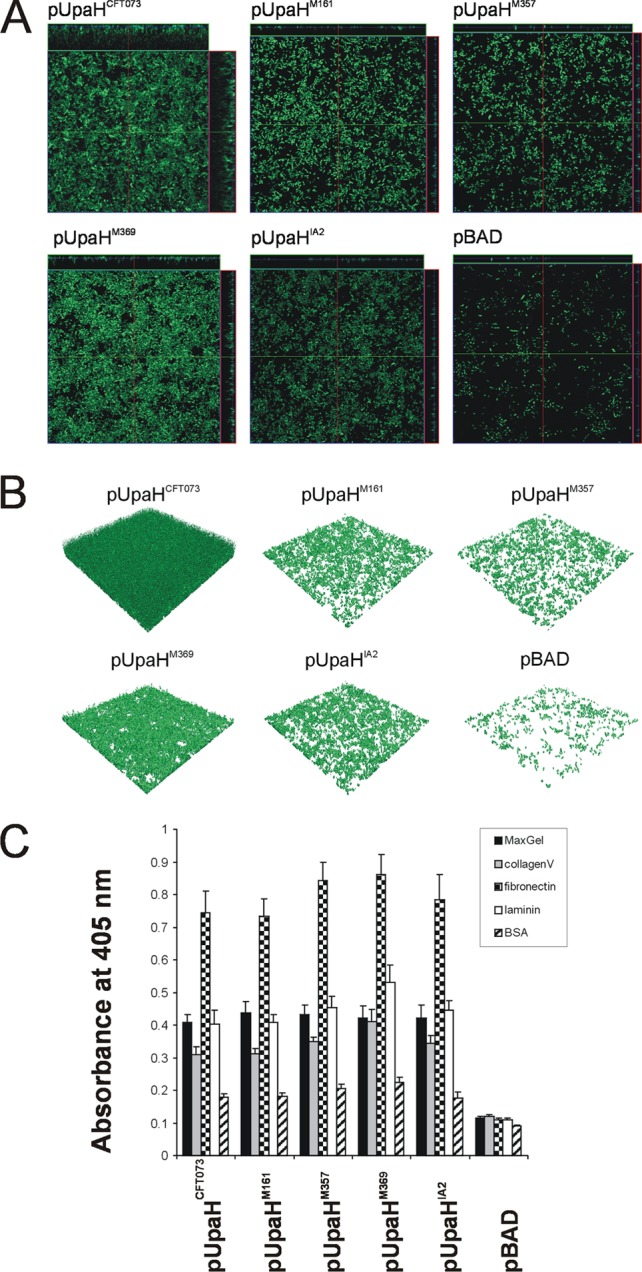Fig 3.

UpaH variants mediate different levels of biofilm formation in E. coli. (A) Overhead-view and (B) 3D-reconstructed fluorescence micrographs of biofilms formed under continuous flow in the dynamic-flow-chamber assay by E. coli OS56 strains expressing different UpaH variants (pUpaHCFT073, pUpaHM161, pUpaHM357, pUpaHM369, pUpaHIA2, or pBAD). Biofilm development was monitored via scanning confocal laser microscopy of the GFP-tagged E. coli strain OS56 cells induced with arabinose. The images in panel A are representative horizontal sections collected within each biofilm and vertical sections (the right panel and above each larger panel, representing the yz plane and the xz plane, respectively). Under 24 h of continuous flow, UpaH variants promoted biofilm growth with significant differences in level of biovolume (P < 0.001), substratum coverage (P = 0.002), vertical spreading (P = 0.001), surface area-to-biovolume ratio (P < 0.001), mean thickness (P = 0.005), and biofilm roughness (P = 0.001). Measurements were analyzed using COMSTAT and the Kruskal-Wallis test. These results demonstrate that UpaH variants resulted in different levels of biofilm formation when expressed from the same plasmid and in the same host background. (C) UpaH variants that mediate E. coli binding to MaxGel, collagen V, fibronectin, and laminin in ELISA-based binding to the same levels. The bar charts represent the average absorbance measurements at 405 nm of 4 independent experiments plus the standard errors of the mean (SEM). The mean absorbance readings were compared with negative control readings for OS56(pBAD).
